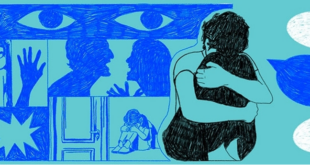Given the high prevalence of internalized symptoms or disorders among children and adolescents, as well as their negative effects on social and school adjustment, many efforts have been made to prevent and treat anxiety and depression disorders. In particular, cognitive behavioral therapy (CBT) programs are currently considered to be the most effective to reduce these disorders or related symptoms of non-clinical internalized behaviors. CBT generally proposes an amalgam of strategies deemed effective in managing internalized disorders, such as cognitive restructuring and relaxation. However, these strategies vary greatly from one CBT program to another, so it is unclear whether certain essentials strategies are systematically implemented or, conversely, whether they are infrequent. To fill this gap, this paper proposes a systematic review of the literature that highlights the different strategies included in CBT programs to prevent and treat internalized behaviors of children and adolescents. To do so, 61 studies reporting the effects of CBT programs for children and adolescents with internalized symptoms or disorders were selected and further examined to provide an inventory of the strategies reported.
Our study led to the identification of an impressive number of strategies, a total of 40, implemented in the programs aimed to prevent or treat symptoms of internalized behavior or disorders of children and adolescents. Moreover, the results revealed a gap between the theory that guides CBT and the strategies that are actually implemented in the programs. Indeed, our review showed that the main strategies at the heart of CBT were not reported systematically in the anxiety or depression programs being evaluated for children and adolescents. In some cases, the programs didn’t even propose both cognitive and behavioral strategies. Furthermore, the strategies applied varied widely from one study to another, which highlights the high degree of heterogeneity of the programs evaluated. This diversity of strategies suggests that in programs designed to prevent or treat internalized symptoms or disorders of children and adolescents, the term “CBT” encompasses a wide variety of programs that often have very few common strategies. Therefore, the principles of CBT theory should be reaffirmed to ensure that the proposed programs minimally include from the outset, both cognitive and behavioral strategies.
Read the full paper: Fréchette-Simard, C., Plante, I., & Bluteau, J. (in press). Strategies Included in Cognitive and Behavioral Therapy Programs to Treat Internalized Disorders: a Systematic Review. Cognitive Behaviour Therapy. doi:10.1080/16506073.2017.1388275



Photo by: Artur Staszewski
 Cognitive Behaviour Therapy A peer reviewed, multidisciplinary journal devoted to the application of behavioural and cognitive sciences to clinical psychology and psychotherapy.
Cognitive Behaviour Therapy A peer reviewed, multidisciplinary journal devoted to the application of behavioural and cognitive sciences to clinical psychology and psychotherapy.




